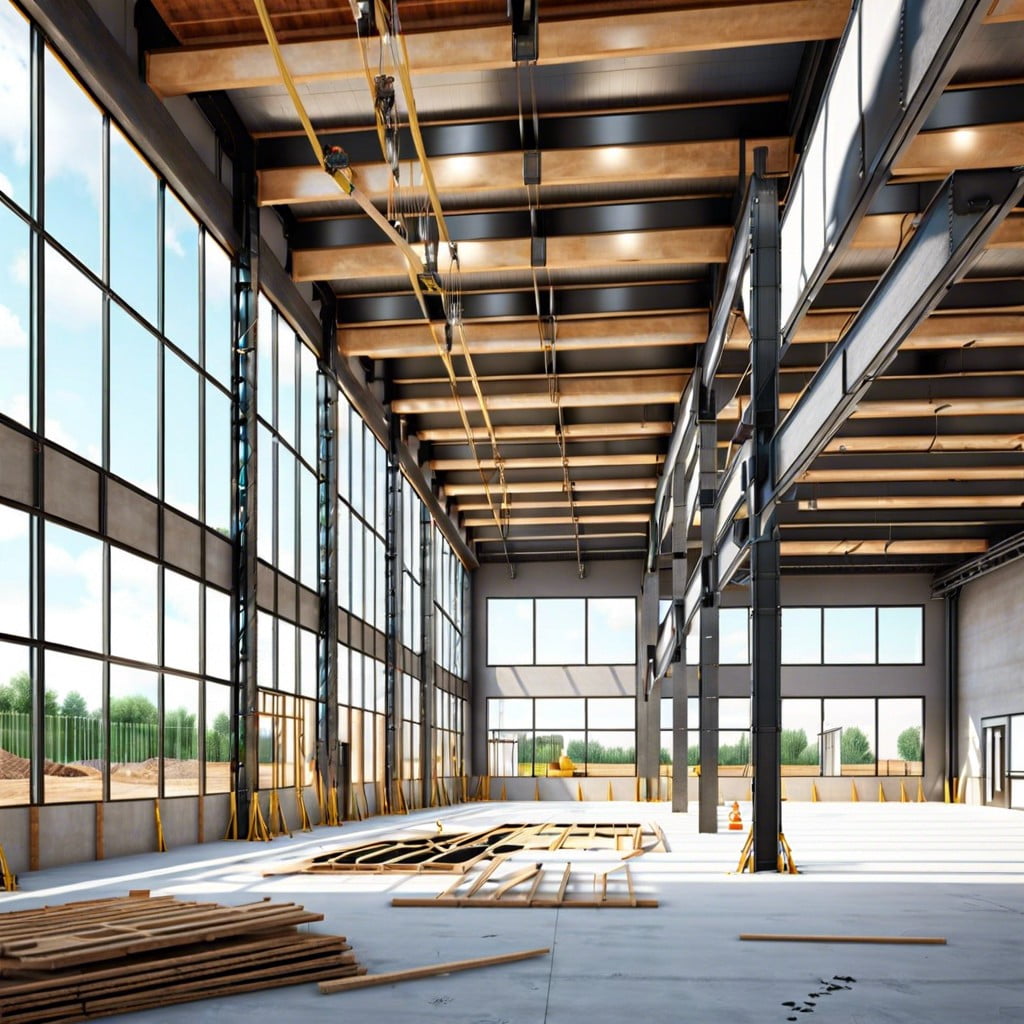This article provides detailed insights into the costs involved in constructing a 10,000 sq ft commercial building.
Key takeaways:
- Material costs and labor costs impact commercial construction expenses.
- Costs vary by building type, such as offices, retail spaces, warehouses, and manufacturing facilities.
- Location and climate affect construction costs, including labor and material prices, regulations, and building codes.
- Saving strategies include using prefabricated materials, bid management, energy-efficient designs, and phased construction.
- Construction methods like steel frame, wood frame, concrete, and prefabricated metal have different cost ranges.
Factors That Affect Commercial Construction Costs

Several elements play a pivotal role in shaping the overall expense of building a commercial property.
Firstly, material costs can fluctuate significantly depending on global supply chains and local market conditions. Opting for high-end finishes and robust materials often spikes the budget.
Labor costs are another crucial factor. Regions with a higher cost of living generally have steeper wages for skilled workers like electricians and carpenters. Additionally, the complexity of the design might require more specialized, hence more expensive, labor inputs.
Permit fees and regulatory requirements also vary by location. More stringent building codes can lead to higher costs in both planning and execution phases.
Lastly, the site’s condition impacts the initial expenses. Land that requires extensive preparation such as clearing, excavation, or even dealing with subsurface issues can add unexpected costs to the budget.
Commercial Construction Cost By Building Type
The price of constructing a commercial building significantly varies based on its intended use. Each type has specific requirements and regulations that influence the overall costs:
– Office Buildings: Typically feature a high number of electrical and data connections, and finishes can range from standard to luxury, impacting the cost.
– Retail Spaces: Costs can reflect the need for large open areas, extra security features, and aesthetic elements designed to attract customers.
– Warehouses: These structures usually have lower costs due to simpler designs and minimal interior finishes but may require large footprints and specialized storage systems.
– Manufacturing Facilities: Incorporate expensive heavy-duty installations and safety systems to accommodate machinery and manufacturing processes.
Understanding these distinctions helps in planning budgets and expectations accurately for your specific commercial construction project.
Commercial Construction Cost By Region
Geographical location significantly influences the price of constructing a commercial building. For instance, cities like New York and San Francisco have higher labor and material costs, driving up overall expenses. In contrast, areas like the Midwest often report more affordable construction costs due to lower land and labor prices.
Climate also plays a critical role. Regions with extreme weather conditions may require specialized building materials and designs, which can elevate costs. For example, buildings in hurricane-prone areas need to withstand high winds and potential flooding, necessitating robust construction standards.
Additionally, local regulations and building codes can impact costs. Some regions have stringent environmental or safety standards that necessitate additional investment in construction processes and materials to comply.
Ways to Save On Building Costs
Opting for prefabricated materials can significantly reduce both labor costs and construction time. These materials, manufactured off-site in a controlled environment, ensure consistent quality and minimize waste.
Another strategy is to engage in vigorous bid management. By soliciting multiple bids and being clear about project specifications, competition increases among contractors, potentially lowering costs without sacrificing quality.
Utilizing energy-efficient designs and materials can also cut costs in the long run. Investments in better insulation or solar panels might have higher initial costs, but they pay off through reduced energy bills.
Finally, planning for phased construction can be beneficial. This approach allows financial flexibility and adjustments based on cash flow, effectively spreading out the expenses over a longer period.
Average Commercial Construction Cost By Construction Method
Steel frame buildings often offer a good balance of durability and cost-effectiveness, averaging between $16 and $20 per square foot. They are particularly favored in sectors where robust structures are critical, such as manufacturing.
Wood frame constructions are typically less expensive, ranging from $14 to $18 per square foot. They are commonly used for smaller commercial projects or regions with lower labor costs.
Concrete buildings, while offering increased fire resistance and soundproofing, stand on the higher end cost-wise, at about $18 to $25 per square foot. This method is prevalent in urban settings or for facilities that require additional security measures.
Prefabricated metal buildings can be a cost-savvy option, setting you back around $13 to $15 per square foot. These structures reduce construction time significantly, cutting down on labor expenses.
Each construction method has its trade-offs regarding durability, installation time, and maintenance needs, influencing the overall cost of your commercial building project.




